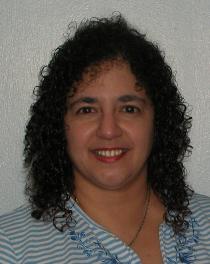| Close Reading for Undergraduate Research |
![PDF-NOTE: Internet Explorer Users, right click the PDF Icon and choose [save target as] if you are experiencing problems with clicking.](http://rsnonline.org/templates/rsntemplate-smallmasthead/images/pdf_button.png) |
 |
|
Page 1 of 3 Carolyn Jones Medine, University of Georgia
Reading “at the Speed of a Writer’s Pen”: A Strategy for Close ReadingGetting students to become self-conscious readers and writers is a perennial problem and is the key to undergraduate research (UR) in religion, literature, and theory. Most of my students are working in literature and theory for their undergraduate research and they need to master not just close reading, but how to engage the arguments of texts and to compare and contrast those with the arguments of other texts. I address this by first reading to students a passage from Michael Ondaatje’s The English Patient (Random House, 1996), in which the patient advises reading at the “speed of a [writer’s] pen” (94). To get the students to do this, I developed a strategy based on one I learned from Todd Penner of Austin College. Though this strategy is one I employ in the undergraduate classroom, I also use it for helping students to prepare for more independent UR as well. Most students at the University of Georgia who are working on undergraduate research are writing a thesis or working on a paper in an independent study. This strategy helps them to learn to read texts closely but also to engage theoretical and critical work on the subject area that they have chosen. Learning not just to quote outside sources, but also to evaluate them, to compare and contrast them to the arguments of other sources, and to put those arguments in fruitful tension and conversation requires close reading. While Todd Penner grades the annotations students write in whole books, I ask students, early in the research, to annotate key passages from three to four texts. I give the parameters of the passage (page number and beginning/ending phrases). The instructions are:
On the back of the page, students write a paragraph in response to an interpretative question. They explain the significance of particular wording, themes, characters, or moments in the passage, their relation to the work, and analyze those using theory we have covered. I first used this technique in a “Religion and Literature” course. For the first exercise, I let the class break into groups and compare their insights and work together to refine the paragraph answer. After the group work concluded, we discussed the first of these exercises and talked about reading strategies that worked for them. The students suggested:
These student-generated strategies expanded upon my original assignment in ways that address a variety of learning styles. |


 Carolyn Jones Medine is an associate professor in the religion department and the Institute for African American Studies at the University of Georgia. Her research concentration is in arts, literature, and religion, particularly Southern and Southern African-American women. She is the coeditor of Teaching African American Religion, and has written numerous articles. Medine’s interests are in literature and theory. She has been a workshop staff member, coordinator and consultant for the Wabash Center for Teaching and Learning in Theology and Religion.
Carolyn Jones Medine is an associate professor in the religion department and the Institute for African American Studies at the University of Georgia. Her research concentration is in arts, literature, and religion, particularly Southern and Southern African-American women. She is the coeditor of Teaching African American Religion, and has written numerous articles. Medine’s interests are in literature and theory. She has been a workshop staff member, coordinator and consultant for the Wabash Center for Teaching and Learning in Theology and Religion.